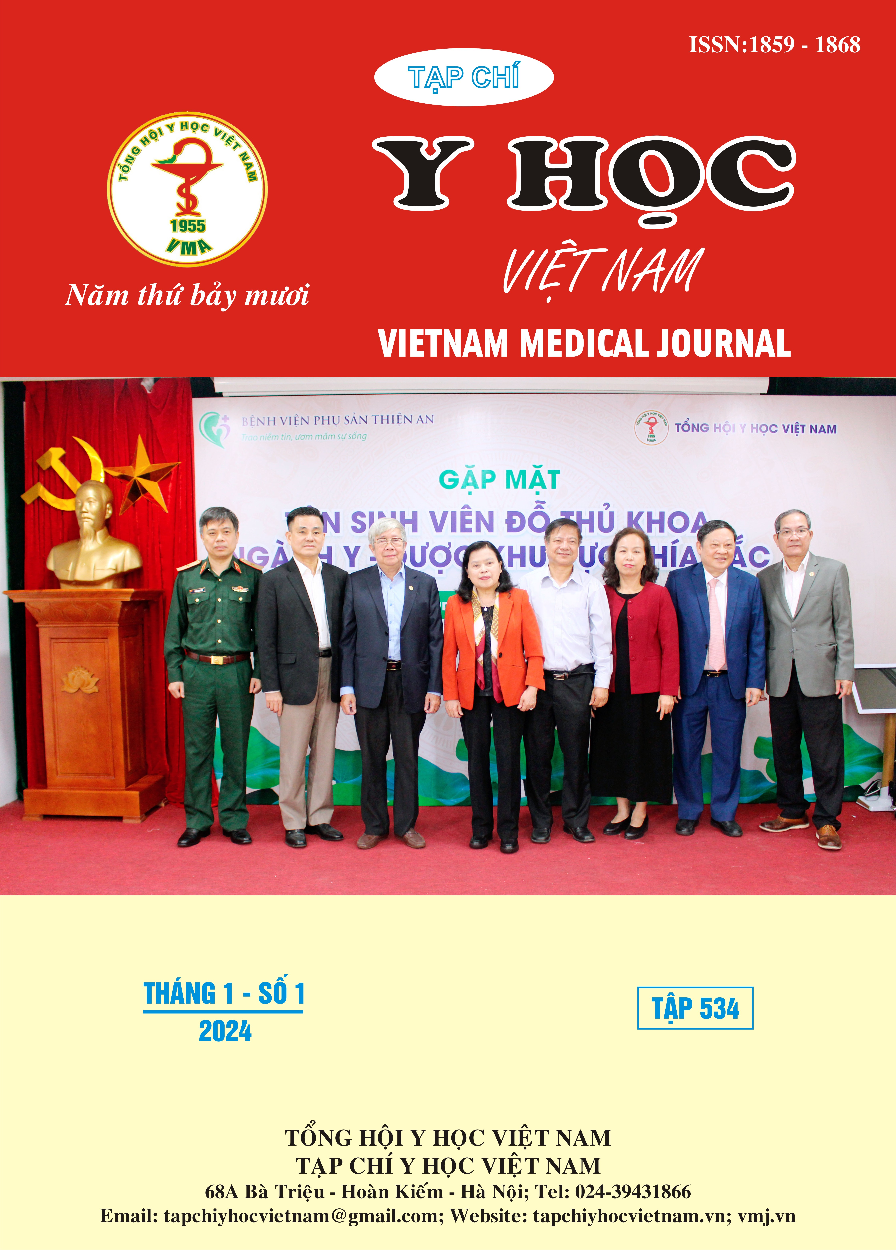EFFECTIVENESS OF TRANSCUTANEOUS TIBIAL NERVE STIMULATION THERAPY VERSUS SOLIFENACIN FOR THE PATIENTS WITH OVERACTIVE BLADDER SYNDROME AFTER STROKE
Main Article Content
Abstract
Objective: To compare the effectiveness of transcutaneous tibial nerve stimulation and solifenacin for the treatment of overactive bladder syndrome (OAB) after stroke. Subjects and research methods: Randomized controlled trial. 52 patients with OAB after stroke at Bach Mai Hospital Rehabilitation Center from 17/10/2022 to 28/05/2023. Subjects were selected and randomly divided into 2 groups (intervention group – control group), the intervention group was treated with transcutaneous tibial nerve stimulation (tTNS) 3 sessions a week for 4 weeks, each session lasted 30 minutes, the control group was treated with Solifenacin 5mg for 4 weeks. Patients were evaluated on the OABSS scale, voiding diary, and VAS patient satisfaction scale before intervention and 4 weeks after intervention. Results: Change in OABSS score before – after treatment of the intervention group was 1.85 ± 0.27, which was less than the control group, 2.92 ± 0.35 (p<0.05). The change in urinary symptoms of the study group based on the urinary diary was similar to the control group including nocturia/24 hours (1.57 and 1.74), urgency/24 hours (1.21 and 1.62). urge incontinence/24h (0.82 and 1.25) (p>0.05). The intervention group had a higher level of satisfaction according to the VAS scale than the control group (7.23 and 5.95) (p<0.05). Conclusion: Applying tTNS for patients with overactive bladder after stroke reduces symptoms of overactive bladder, has less effectiveness than treatment with Solifenacin 5mg, but has better level of satisfaction. tTNS may be an effective option for the treatment of OAB after stroke with few side effects.
Article Details
References
2. Chen G, Liao L, Li Y. The possible role of percutaneous tibial nerve stimulation using adhesive skin surface electrodes in patients with neurogenic detrusor overactivity secondary to spinal cord injury. Int Urol Nephrol. 2015;47(3): 451-455. doi:10.1007/s11255-015-0911-6
3. Majdinasab N, Orakifar N, Kouti L, Shamsaei G, Seyedtabib M, Jafari M. Solifenacin versus posterior tibial nerve stimulation for overactive bladder in patients with multiple sclerosis. Front Neurosci. 2023;17: 1107886. doi: 10.3389/ fnins. 2023.1107886
4. McClurg D, Elders A, Hagen S, et al. Stimulation of the tibial nerve-a randomised trial for urinary problems associated with Parkinson’s-the STARTUP trial. Age Ageing. 2022;51(6): afac114. doi: 10.1093/ageing/afac114
5. Monteiro ÉS, de Carvalho LBC, Fukujima MM, Lora MI, do Prado GF. Electrical stimulation of the posterior tibialis nerve improves symptoms of poststroke neurogenic overactive bladder in men: a randomized controlled trial. Urology. 2014;84(3): 509-514. doi: 10.1016/ j.urology.2014.05.031
6. Pyo H, Kim BR, Park M, Hong JH, Kim EJ. Effects of Overactive Bladder Symptoms in Stroke Patients’ Health Related Quality of Life and Their Performance Scale. Ann Rehabil Med. 2017;41(6): 935-943. doi:10.5535/arm.2017.41.6.935
7. Sayner AM, Rogers F, Tran J, Jovanovic E, Henningham L, Nahon I. Transcutaneous Tibial Nerve Stimulation in the Management of Overactive Bladder: A Scoping Review. Neuromodulation. Published online June 7, 2022: S1094-7159(22) 00630-4. doi: 10.1016/ j.neurom. 2022.04.034
8. Xiong SC, Peng L, Hu X, Shao YX, Wu K, Li X. Effectiveness and safety of tibial nerve stimulation versus anticholinergic drugs for the treatment of overactive bladder syndrome: a meta-analysis. Ann Palliat Med. 2021;10(6): 6287-6296. doi: 10.21037/apm-21-339


